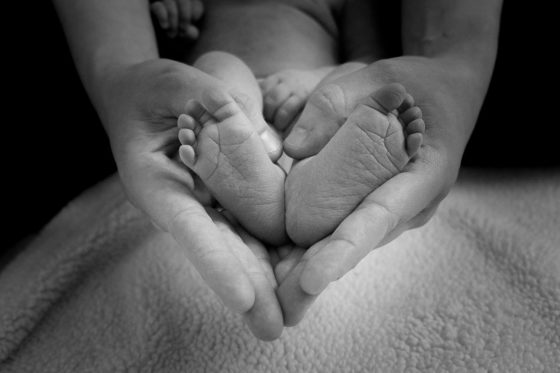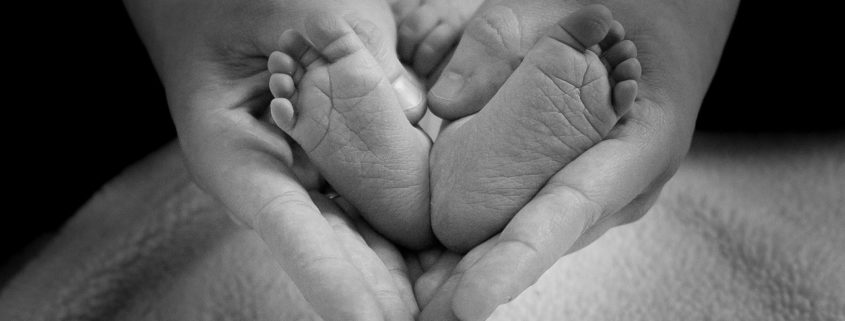Baby’s Heart Rate: What It Means for Brain Injuries

A new study in the UK found that, unfortunately, some doctors are not properly doing this. An abnormal heart rate is a big sign that baby is stressed and may not have enough oxygen, which typically speeds up delivery and can create more complications. Failure to monitor baby’s heart rate is why some newborns are dying or receiving a severe brain injury. That, in turn, can lead to a higher amount of birth injury lawsuits.
Below, we’ll go over what baby’s heart rate means, if you should take steps to monitor your baby’s heart rate at home, what warning signs to look out for during labor, and how this new information might affect birth injuries in the U.S.
Contents
What does monitoring a baby’s heart rate do?
The UK study, called “Each Baby Counts” and run by the Royal College of Obstetricians and Gynaecologists, examined more than 1,100 stillbirths, neonatal deaths, and brain injuries that occurred in UK maternity wards in 2015. Of those, more than 850 were babies with severe brain damage (reported within 7 days of birth). Only about 700 total cases could be reviewed fully, however, which left researchers with the following shocking information:
Three out of four babies may have had a different outcome in life if they had gotten different care.
A significant factor in babies’ deaths or injuries included issues with assessing the fetus’ health during labor, such as by interpreting heart-rate patterns on traces from CTG machines. Some of these assessments may be complex and require additional training, which is what, in the end, Each Baby Counts recommends.
So, how do doctors properly monitor a baby’s heart rate?
Some monitoring may be done before labor, such as if you have a high-risk pregnancy, a health condition like diabetes, have had any complications during your pregnancy, or you are overdue (past 40 weeks). These tests may be done a few times to ensure baby is progressing nicely and that there are no problems.
We’ll take a look at the many types of tests both before and during labor.
Heart-Rate Tests Before Labor
The tests before labor include the following.
Non-stress Test (NST): Monitors if baby’s heart rate goes faster while resting or moving. You’ll be hooked up through a fetal monitor but receive no medicine during the test. A non-reactive result means baby’s heart rate didn’t go up enough, and these results can be Category 1, 2, or 3 (the latter meaning your doctor may recommend delivery right away).
Contraction Stress Test (CST): This takes place if you have poor NST results. Each contraction during actual labor delivers less blood and oxygen to the baby, so this test shows how baby will react during labor by simulating it. You’ll be hooked up to a fetal monitor and given Pitocin, which will make your uterus contract. A slowed-down heart rate, instead of sped-up, during contractions may indicate future problems during labor — and you may be admitted to a hospital to deliver right away.
Biophysical Profile (BPP) and Modified Biophysical Profile (MBPP): These are both NSTs with an ultrasound. The BPP looks at baby’s movement, body tone, breathing, and NST results, while the MBPP is a quicker test that only looks at amniotic fluid. Again, abnormal results may mean an early delivery.
Heart-Rate Tests During Labor
There are a few technologies to monitor fetal heart rate during labor, some controversial. We’ll give a quick review of these, but you should always speak to your doctor about any concerns you may have ahead of delivery.
Cardiotocography (CTG) machine: A CTG is often used in relation to women’s contractions during labor. Results are printed on a CTG trace, but it can be difficult to determine if results are normal or abnormal, meaning doctors can intervene too early — or too late.
Computerized decision aids, or expert systems (ES): These help guide CTG interpretation; however, there isn’t much evidence that a CTG with an ES reduces the chance of a C-section, using forceps to assist with delivery, or any resulting brain injuries because of lack of oxygen during delivery.
Fetal oxygen saturation monitoring: This measures blood oxygen levels alongside electronic fetal monitoring, but also offers no apparent benefit. Excess oxygen, or hyperoxia, also is toxic and can be a neonatal health hazard — even though it is the most commonly used drug in neonatal intensive care units.
Fetal scalp pH testing: This also helps determine if baby is getting enough oxygen and if a C-section or forceps delivery is needed. A small blood sample is taken from the scalp of the fetus if a mother’s cervix is dilated at least 3-4 centimeters. Most deliveries don’t involve this test, even though it isn’t uncommon.
Fetal recoil: Testing how a baby moves in response to stimulation can be done when electronic fetal monitoring results are inconclusive. A baby’s movement is generally a good indicator of his or her health.
See also: Surprising Body Changes During Pregnancy
Should I monitor my baby’s heart rate at home?
Women who want to ensure they have a healthy pregnancy may be tempted to monitor their baby’s heart rate at home. While electronic fetal monitoring during labor can result in unnecessary interventions (or ones that don’t happen at all), what about using technology before labor?
One pilot study in 2015 examined a wireless fetal monitoring prototype in 32 pregnant women who were in an inpatient labor unit in the U.S. The prototype was worn for 30 minutes at a time to monitor heart rate, transmit the data to Cloud storage, and then view the results online. While there were some hiccups in using the technology, most of the pregnant women and clinicians in the study found it to be useful and would recommend it to others. However, there were some concerns regarding both safety and design (education on radiation risks is one way to ease worries).
As mentioned above, baby’s movement is overall a good sign that things are moving along well in your pregnancy. And remember: Your health is of the utmost importance. A healthy mama makes for a healthy baby — your heart rate affects your baby’s heart rate — so be sure to stop smoking, put in a few 30-minute sessions of exercise per week if it’s comfortable and safe for you to do so, and kick caffeine for a while.
See also: Managing Stress and Pregnancy
Will I know if I’m going to have a difficult labor?
While your individual labor experience may not be completely predictable, there are a few things both you and your doctor team can be aware of if you are approaching a difficult labor. A labor that goes on very long, if you are post-term, or if you have a big baby might mean more issues. Larger babies are at higher risk for birth injuries, in addition to those who aren’t moving through delivery fast enough — oxygen deprivation is one of the leading causes of brain damage, including cerebral palsy.
Doctors have to move fast sometimes to get baby out, which may mean performing a C-section or using tools like forceps and vacuum extraction in a natural delivery. The most common types of birth injuries are birth canal injuries, with trauma to the head, neck, and shoulders.
A few warning signs during pregnancy, such as if the baby stops moving or you get a fever, may indicate an immediate danger, so be sure to keep in close contact with your doctor through each stage of your pregnancy.
Is a birth-injury lawsuit right for me?
If you or your baby were injured during childbirth, you may be entitled to compensation through a birth-injury claim. If your doctor didn’t properly monitor your baby’s heart rate during labor, or he miscommunicated with your birth team, you may seek damages for the injuries caused to you and your loved ones.
Contact the team at Safe Birth Project today for a free, no-obligation consultation.
See also:








Leave a Reply
Want to join the discussion?Feel free to contribute!